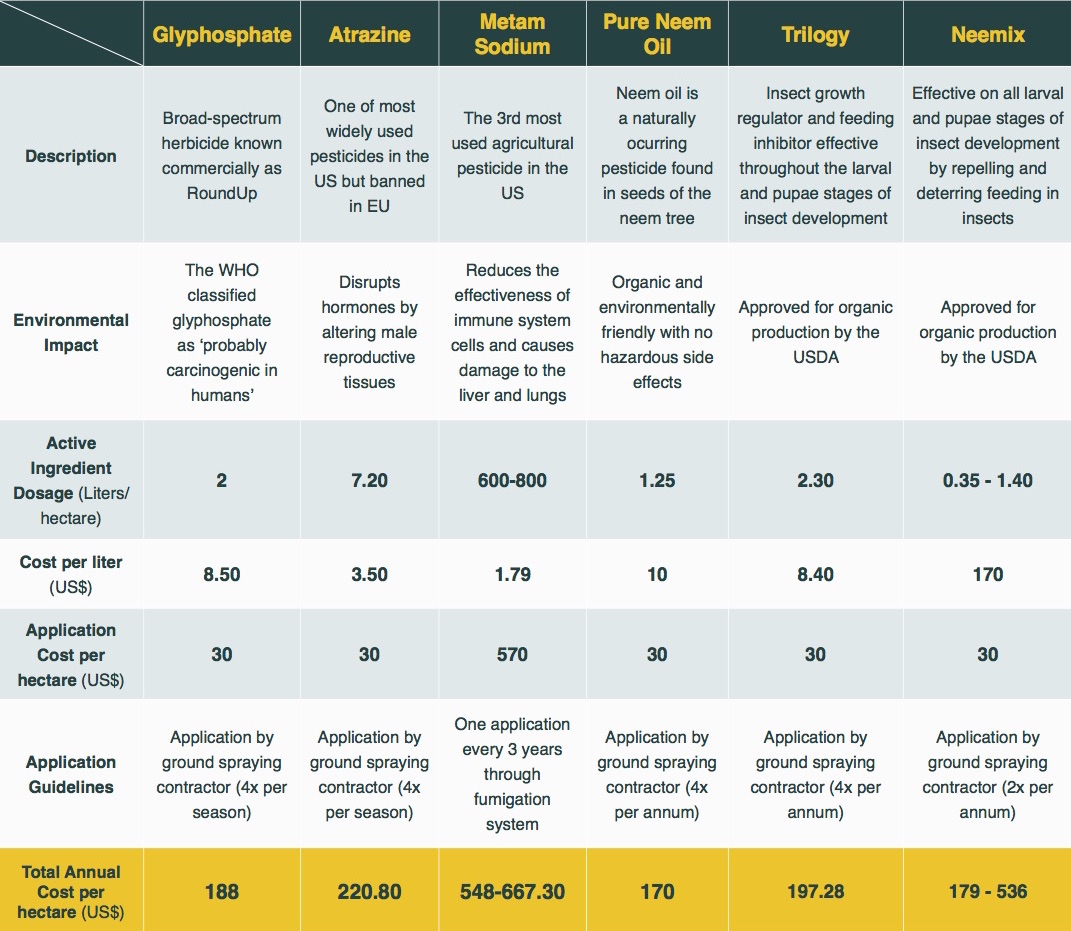Azadirachtin, a chemical compound found exclusively in the neem tree, holds the secret to sustainable crop care.
On a field investigation to Sudan in 1952, Dr. Heinrich Schmutterer was studying the feeding habits of desert locusts and noted a large collection of neem trees that were curiously left undisturbed. Over half a century later chemists from the University of Cambridge successfully isolated and synthesized the organic chemical responsible for such pervasive crop protection – Azadirachtin. Renown for its robust insecticidal properties against 600 species of insects, institutions such as the Environmental Protection Agency, the US Department of Agriculture and the European Union are now endorsing the extraordinary compound for agricultural use.
Biodegradable and non-toxic to mammals, azadarichtin disrupts the growth cycle of insects and deters them from feeding on plants. A naturally occurring substance that belongs to an organic molecule class called tetranortrriterpenoids, azadirachtin is a chemical structure that is similar structure to the insect hormone ‘ecdysones.’ These are hormones that control metamorphoses, and are disrupted when exposed to azadirachtin, neem’s most active ingredient. By affecting the hormonal balance of insects, azadirachtin reduces their rate of reproduction and inhibits normal feeding behavior. As neem-based products must be ingested to take effect, only insects that feed on plant tissues are prone thereby eliminating any risk towards pollinators and other natural enemies that are beneficent to our environment and our food supply.
Pesticide Cost Comparison
 Source: Primal Group (2015)
Source: Primal Group (2015)
Disclaimer: All major assumptions have been sourced from the Atrazine Product Guide, Monsato Product Guide, Metam Sodium Product Guide, Trilogy Product Guide, Neemix Product Guide, Ultra Bio-Logics Inc., Deloitte and Neem Tree Farms. The Total Annual Cost per Hectare may vary due to variables including target pest, crop and application method. Any mention of specific products should not be construed as endorsements, but rather as an illustration of the viability and variety of neem-based pesticides currently on the market.
The extraction of azadirachtin from neem is the crucial process in ensuring the highest quality of bioinsecticide. Azadirachta Indica (neem) oil and azadirachtin can be acquired through solvent dilution, cold aqueous extraction or cold pressing. These extraction methods obtain various oil strengths, and are priced accordingly. The azadirachtin concentration in neem seeds range from 0.1%-0.9%. With 30-60 grams of the compound needed to combat key pests per hectare, costs can reach up to $60 per hectare. Conventional pesticides are nearly double the price at $108 per hectare. Solvent extraction, the most expensive method, and produces the purest type of azadirachtin by separating all the liminoids found in neem. Aqueous extraction, despite obtaining the weakest concentration of neem oil and azadirachtin, is the cheapest option and is used in farms in developing regions of the world where resources are scarce.
Neem seeds that have gone through the oil extraction process do not go to waste; the residue, known as ‘cake’ still contains vital nutrients necessary for plant development that can be returned to the soil to nourish plants and crops. Improving the soil’s organic content while protecting plant roots from pests, diseases and nematodes, the cake benefits soil texture and increases water retention. Packed with nutritional value, neem cake has more nitrogen, phosphorous, potassium, calcium and magnesium than ordinary farmyard manure. It is used to fertilize rice, cotton, and sugarcane, while also protects a variety of other crops, including coconut trees.
Nano-biotechnology is the latest frontier for botanical insecticides such as Azadirachtin, offering the ability to provide a controlled release of the molecule at the point of action. It can also help to minimize undesirable toxic effects on non-target organisms, as well as improve the stability of its physical and chemical properties, while preventing the degradation of the active agent by microorganisms. Minimizing losses in the field as well as during transport and storage in this way is a prerequisite to optimising agricultural production.
The reason for the extensive research into azadirachtin over the past several decades is simple – growth, demand and necessity. Valued at $653 million in 2015, the global neem extract market is forecast to reach $1.8 billion by 2022 at a CAGR of 16.3%. A mere drop in the $58.4 billion synthetic pesticide market now, an increasing population requiring more food, crop yields at risk of decline and rapidly developing resistance to conventional pesticides will require environmentally sustainable methods for agricultural development in future. The increasing concern of regulatory authorities towards chemical-based fertilizers will also convince both farmers and consumers to opt for safer practices. There is no question; agriculture’s future is organic.